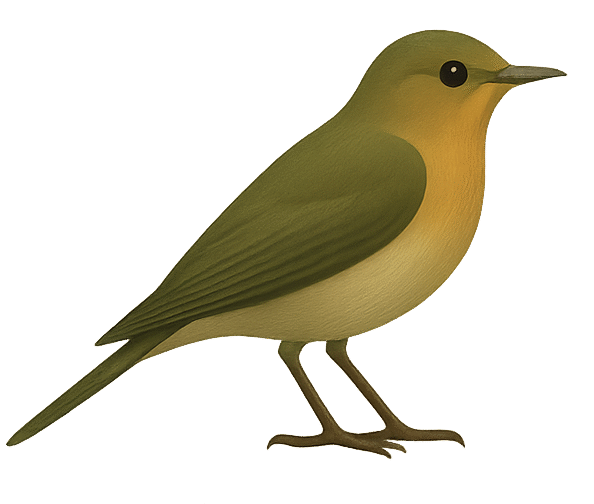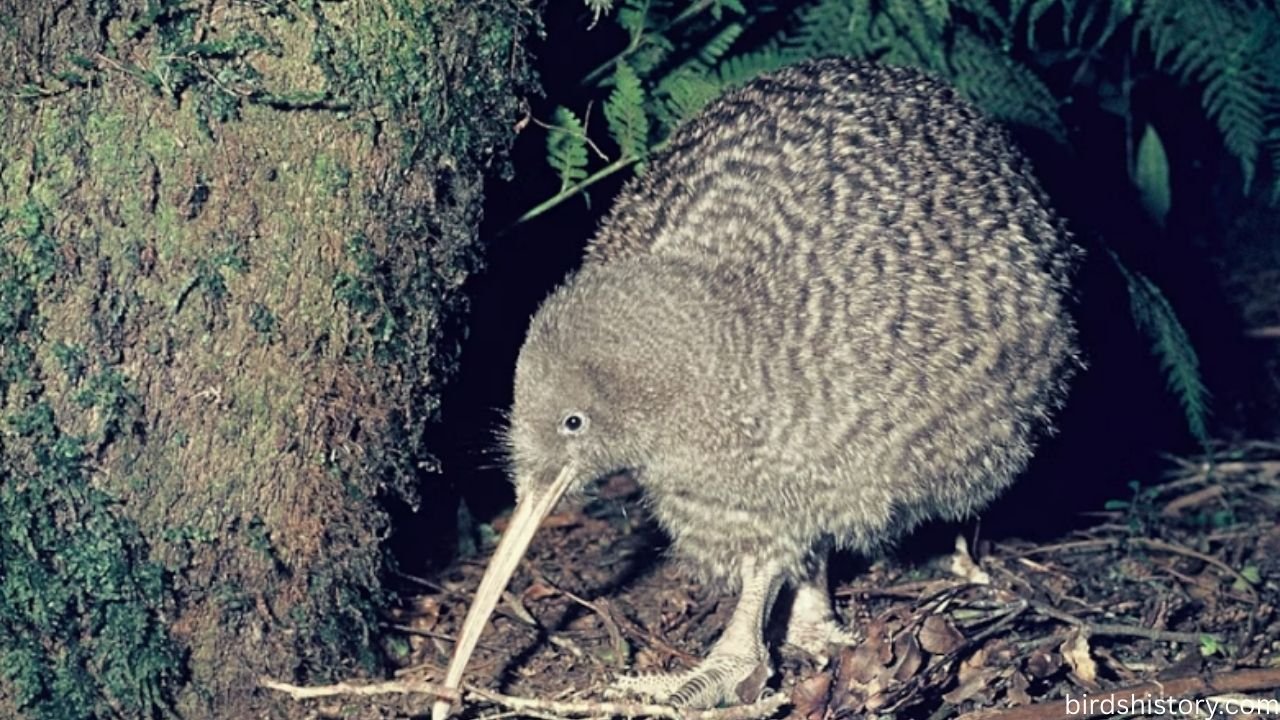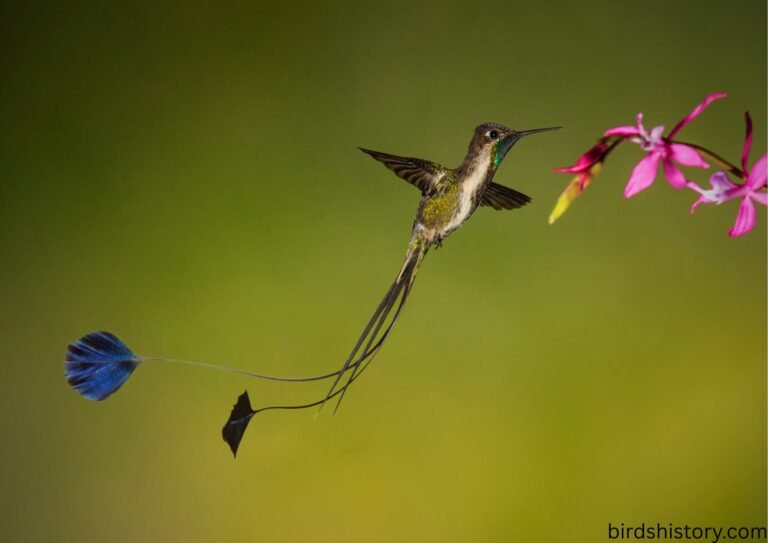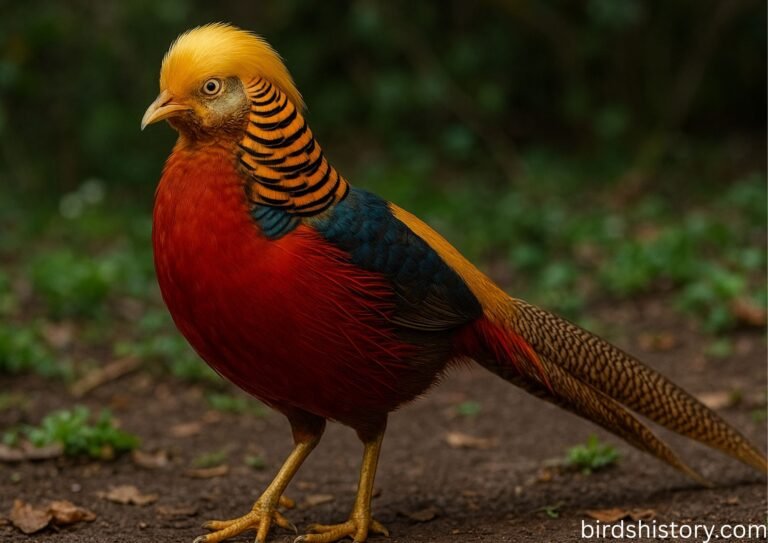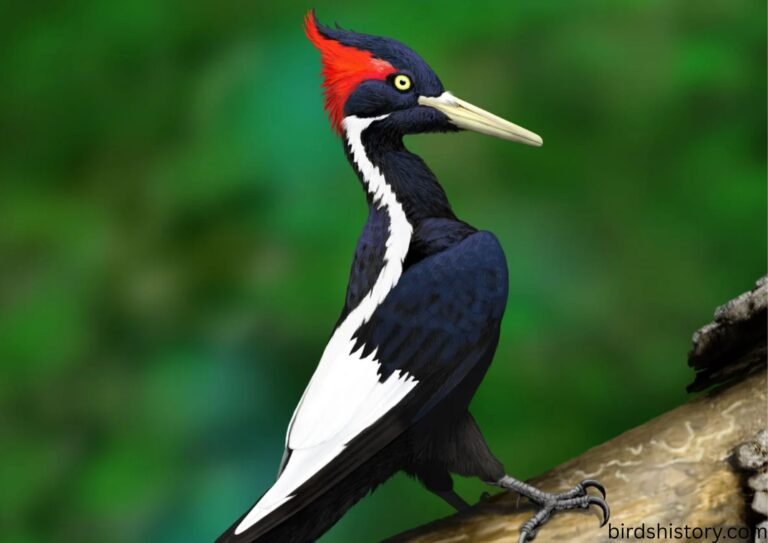The Great Spotted Kiwi: New Zealand’s Nighttime Guardian
The Great Spotted Kiwi, also called the Roroa, is the largest of New Zealand’s kiwi species and one of the country’s most fascinating nocturnal birds. Endemic to the South Island, this flightless, long-beaked bird roams the rugged high country, thick forests, and subalpine zones under the cover of darkness. Its shaggy feathers, shy nature, and haunting night calls make it both mysterious and enchanting.
What makes the Great Spotted Kiwi especially interesting is its resilience. Despite facing predators, habitat loss, and human activity, it remains one of the stronger kiwi populations in the wild. Still, it’s classified as vulnerable, with careful conservation needed to secure its future.
Here’s a fun fact: unlike most birds, kiwis have nostrils at the tip of their beaks, which allows them to sniff out worms and insects underground. Imagine a bird that tracks its prey with its nose, just like a dog. That quirky adaptation is just one of the many reasons the Great Spotted Kiwi captures the imagination.
Taxonomy / Classification
To understand the Great Spotted Kiwi, let’s look at where it fits in the bird family tree:
- Common Name: Great Spotted Kiwi or Roroa
- Scientific Name: Apteryx haastii
- Family: Apterygidae
- Order: Apterygiformes
- Class: Aves
Also read: /the-elephant-bird/
The species was named after Julius von Haast, a 19th-century explorer and geologist of New Zealand. The Māori name Roroa reflects the bird’s large size compared to other kiwis.
Physical Description
The Great Spotted Kiwi is impressive in both size and appearance.
- Standing roughly 45 cm (18 inches) tall, the Ōkārito Kiwi is the largest of all kiwi species.
- Female kiwis are heavier, weighing up to 3.9 kg, while adult males typically range from 2.4 to 3.3 kg.
- Plumage: Their feathers are shaggy, streaked with gray and white, giving them a mottled, “spotted” look—hence their name.
- Beak: Long, pale ivory beak with nostrils at the tip, adapted for probing soil.
- Wings and Tail: Tiny, vestigial wings hidden under feathers, no visible tail.
- Feet: Large, strong legs with three forward-pointing toes, built for digging and defending territory.
- Sexual Dimorphism: Females are slightly larger, often producing massive eggs relative to body size.
Their scruffy, almost mammal-like feathers and sturdy build make them one of the most distinctive-looking birds on Earth.
Habitat and Range
The Great Spotted Kiwi is a nocturnal bird that feeds whenever it finds an opportunity.
- Regions: Mainly in northwest Nelson, the Paparoa Range, and the Southern Alps between Arthur’s Pass and Lake Sumner.
- Habitat: Prefers rugged, mountainous terrain with dense forest, subalpine scrub, and tussock grasslands.
- Altitude: Found from sea level in some areas to over 1,500 meters in alpine environments.
- Territory: Highly territorial; pairs maintain large home ranges, often overlapping slightly with neighbors.
Unlike other kiwi species that stick to lowland forests, the Great Spotted Kiwi thrives in harsher, higher environments where fewer introduced predators survive.
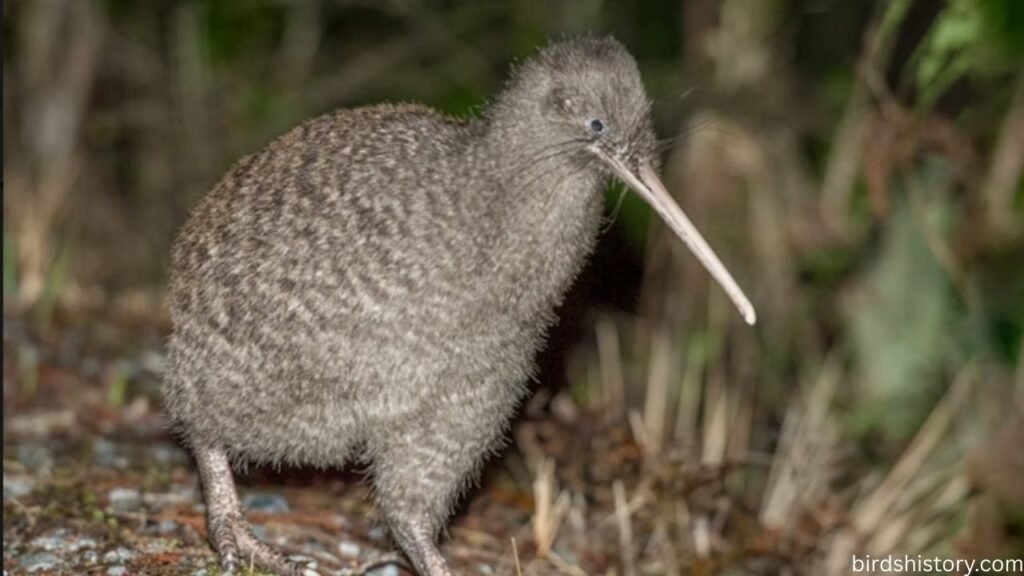
Diet and Feeding Habits
The Great Spotted Kiwi is a nighttime eater that takes advantage of any food it can find.
- Main Diet:
- Earthworms
- Beetles and larvae
- Wētā (large New Zealand insects)
- Spiders and centipedes
- Occasional Foods:
- Fruits, seeds, and small amphibians
- Foraging Technique:
- Uses its keen sense of smell and sensitive beak tip to probe soil.
- Often leaves behind small holes that mark feeding spots.
This unique “nose-led” hunting style makes the kiwi stand out among birds, most of which rely on sight for feeding.
Behavior and Lifestyle
The Great Spotted Kiwi leads a fascinating lifestyle shaped by its environment.
- It is a nocturnal animal that spends the daytime concealed in burrows, logs, or rock crevices.
- Social Structure: Usually found in lifelong monogamous pairs.
- Territoriality: Defends large areas, using calls and aggressive behavior to ward off intruders.
- Vocalizations:
- Loud, shrill calls that echo through valleys at night.
- Males produce a higher-pitched call; females are lower and raspier.
- Mating Rituals: Mated pairs perform duet calls that strengthen their bond.
Though shy, they can be surprisingly feisty when defending their territory, using their powerful legs to kick at rivals or predators.
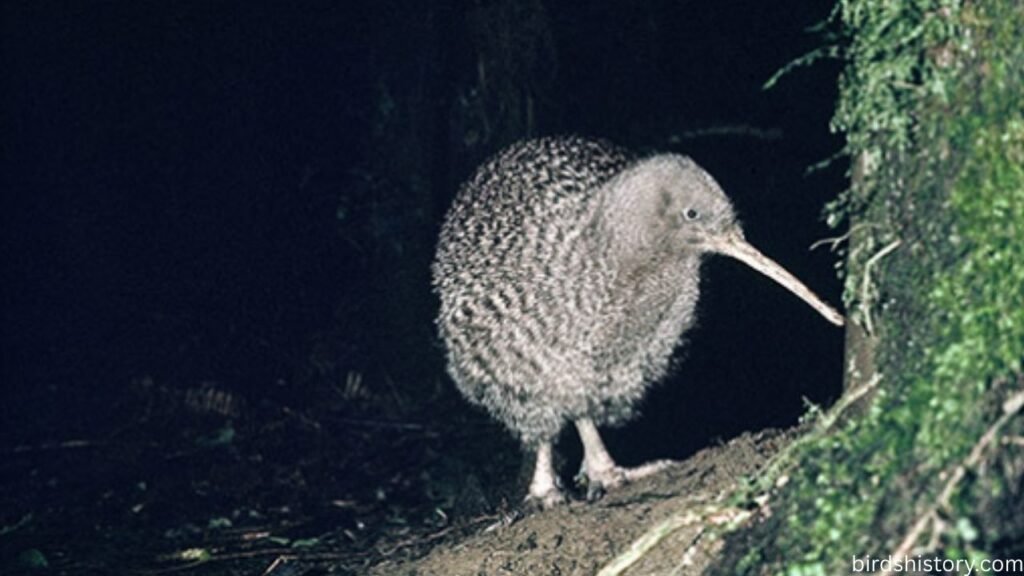
Reproduction and Lifespan
Reproduction in the Great Spotted Kiwi is unusual and fascinating.
- Breeding Season: Mostly winter months (June–September).
- Eggs:
- Female great spotted kiwis typically lay one or two eggs, which are remarkably large for their body size, sometimes weighing as much as 20% of the mother’s total weight.
- Eggs are white or greenish.
- Incubation: The male takes the main role, incubating for about 70–80 days.
- Chicks: Hatch fully feathered and relatively independent. They often leave the nest after a few days, but survival rates are low without protection.
- With a lifespan of up to 50–60 years in the wild, this bird is among the longest-living avian species.
Their slow reproduction—one chick a year at most—makes them vulnerable to population decline when predation is high.
Predators and Threats
The Great Spotted Kiwi faces both natural and introduced dangers.
- Natural Predators: Historically, large birds of prey, though few remain today.
- Introduced Predators:
- Stoats kill chicks.
- Dogs can kill adults quickly.
- Cats and ferrets are also threats.
- Environmental Threats:
- Habitat loss from deforestation and human expansion.
- Road accidents in areas near settlements.
- Human Impact: Though protected, they are vulnerable to disturbance from tourism and farming activities.
Predation by stoats and dogs remains the greatest challenge to their survival.
Conservation Status
The Great Spotted Kiwi is listed as Vulnerable.
- Population Estimate: About 15,000 individuals remain in the wild.
- IUCN Status: Vulnerable.
- Trends: Declining in unprotected areas, but stable or improving in managed reserves.
- Conservation Actions:
- Predator control programs.
- Operation Nest Egg (raising chicks in captivity until large enough to fend off predators).
- Protected areas and sanctuaries in the South Island.
Thanks to these efforts, certain populations are holding steady, but continued management is essential.
Interesting Facts about the Great Spotted Kiwi
- It is the largest kiwi species, sometimes weighing nearly 4 kg.
- Unlike most birds, kiwis have marrow-filled bones, more like mammals.
- They have whisker-like feathers around the beak, helping them feel their way in the dark.
- In the avian world, their eggs are among the largest in comparison to the size of their bodies.
- Great Spotted Kiwis can live up to six decades, making them remarkably long-lived.
- They are one of only two kiwi species that thrive in alpine environments.
- Māori legend regards the kiwi as a taonga (treasure) and a guardian of the forest.
Conclusion
The Great Spotted Kiwi is more than just a bird—it’s a symbol of resilience, adaptation, and the unique natural heritage of New Zealand. From its mottled plumage and nocturnal habits to its lifelong partnerships and booming calls, the Roroa captures the imagination in every way.
Though threatened, it remains one of the stronger kiwi populations, thanks to dedicated conservation work. Protecting this remarkable species ensures not only its survival but also the preservation of New Zealand’s unique biodiversity.
Learning about the Great Spotted Kiwi is a reminder that even the shyest creatures play an essential role in the ecosystems they call home.
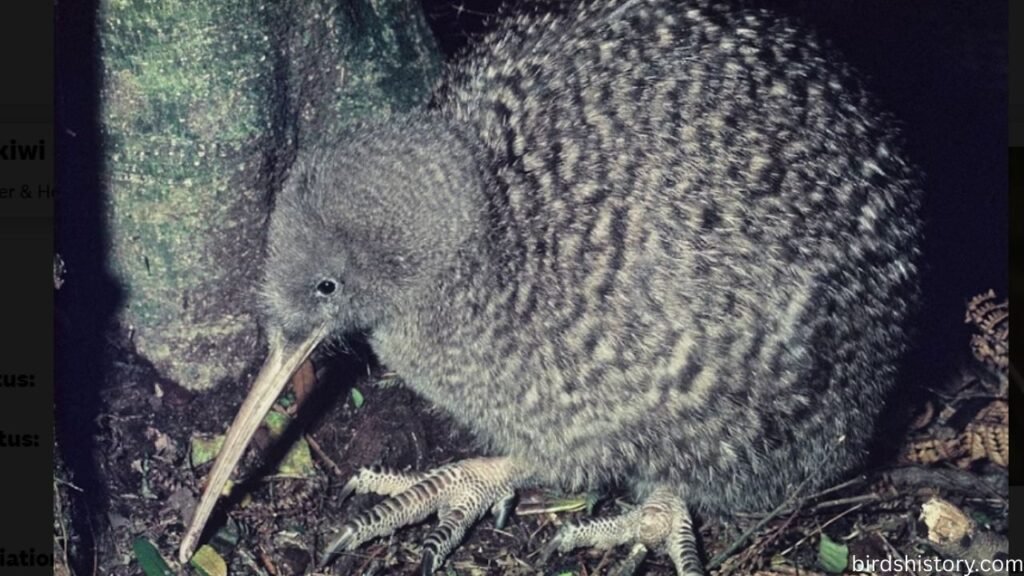
FAQs
1. What is the scientific name of the Great Spotted Kiwi?
Apteryx haastii.
2. Where is it found?
Only on the South Island of New Zealand, in mountainous and forested areas.
3. How big is the Great Spotted Kiwi?
It stands about 45 cm tall and can weigh up to 3.9 kg.
4. What does it eat?
Mainly earthworms, beetles, wētā, and other invertebrates.
5. Is the Great Spotted Kiwi endangered?
It is listed as Vulnerable due to predation and habitat threats.
6. How many Great Spotted Kiwis are left?
Around 15,000 individuals.
7. Can the Great Spotted Kiwi fly?
No, it is completely flightless.
8. How long do they live?
Up to 50–60 years in the wild.
9. Who incubates the eggs?
The male usually takes the main role in incubation.
10. Why is it called the Great Spotted Kiwi?
Because of its large size and mottled, spotty gray-white plumage.
